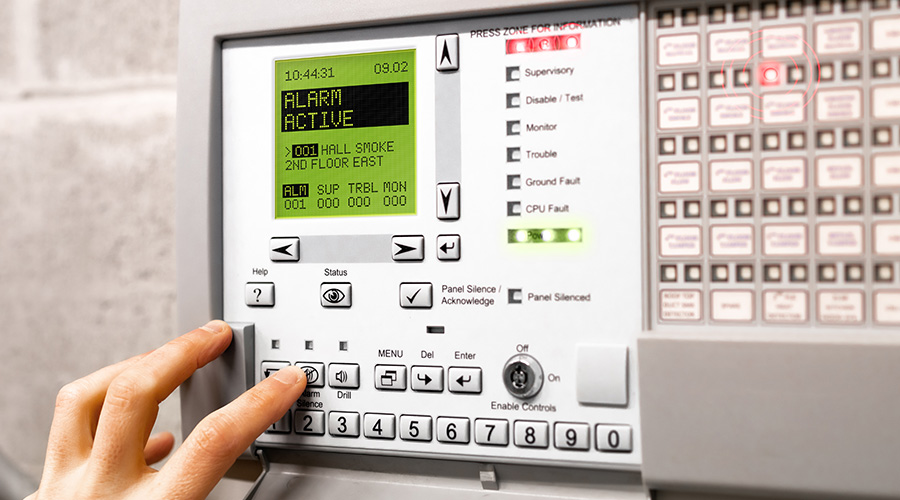Improve Fire Safety Compliance with Software Implementation
Ditch paper-based methods in favor of digital systems that can better track inspections, testing and maintenance of life safety products.
By Matthew Icenroad, Contributing Writer
In today's rapidly evolving world, ensuring safety and compliance with building codes and regulations has never been more critical. For facility managers, achieving and maintaining code compliance is a complex and multifaceted task, often necessitating the expertise and guidance of engineer code consultants. Managing compliance can be particularly challenging in environments where risks are complex and operational variables are constantly in flux.
Technology, artificial intelligence (AI), and machine learning (ML) tools have empowered facility managers with the ability to readily assess their compliance status, manage their priorities more efficiently, and streamline the improvement process. Bringing together professional expertise, such as that of facility managers and fire protection engineers, with cutting-edge technology tools can reduce risk and improve life safety in facilities.
Compliance challenges
Facility managers and building owners are responsible for assuring life safety compliance through regular inspections, testing, and maintenance (ITM) of critical life safety systems, including fire alarms, sprinkler systems, emergency exits, and power distribution. These activities are indispensable in mitigating unexpected failures and safeguarding lives. However, managing these activities using traditional methods, like physical, paper-based systems, is far from straightforward, as various factors can impede ITM processes. Challenges associated with traditional methods include:
- Human error. Paper-based systems are prone to human error, omissions, and misunderstandings. Mistakes in recording and reporting could potentially compromise safety.
- Inefficiency. Manual processes can be time-consuming. Technicians might spend valuable hours filling out forms and cross-referencing data, diverting their attention from the actual inspections.
- Limited accessibility. Accessing historical records or sharing information across different departments or locations becomes challenging when the information is stored in physical files or cabinets.
- Poorly maintained records. Failure to maintain accurate records and ensure timely inspections could result in regulatory non-compliance, potentially leading to penalties or, even worse, unsafe conditions.
Digital shift
Over the years, a profound digital transformation has taken place in the dynamic landscape of life safety compliance activities. This transformation transcends mere technological evolution. More and more, organizations are adopting dedicated software solutions tailored to manage and track these vital processes, moving far beyond the limitations of traditional work order systems. This integration of digital technologies has brought about a paradigm shift in the realms of safety and risk reduction.
One of the most significant advancements in the digital transformation of life safety compliance activities is the dedicated software designed explicitly for this purpose. Advantages of these platforms include:
- Comprehensive record keeping. Dedicated software allows for the centralization of all inspection and maintenance data in one secure digital repository. This comprehensive record-keeping simplifies auditing and reporting, making sure nothing falls through the cracks.
- Automation and integration. These software solutions often integrate with other systems, like facility management and inventory control. This further streamlines processes, reducing manual data entry and ensuring all relevant information is easily accessible.
- Enhanced visibility. Digital platforms provide real-time visibility into life safety activities. Organizations can track progress, receive instant notifications of issues, and make informed decisions on the fly.
- Scalability. Dedicated software can scale with the organization's needs. Whether a company manages a single building or a vast portfolio of properties, the software can adapt to accommodate the growth.
- Customization. With the ability to be tailored to specific industry standards and regulations, digital solutions can accommodate the unique requirements of different life safety systems and industries.
- Ability to learn. Newer technology, such as AI and ML, can analyze extensive data sets and learn how to prioritize maintenance activities. The more these analyses are performed and refined, the more engineers can focus on remediation.
People and technology
In the world of engineering and safety, a harmonious partnership between technology and engineering professionals is essential to not only ensure the well-being of people but also the longevity of systems.
Technology only reaches its full potential when it works hand-in-hand with the expertise of engineering professionals.
Engineering professionals bring their wealth of knowledge and experience as well as an intricate understanding of the systems they oversee. Like seasoned detectives, they can decipher the intricacies of inspection results, identify the areas needing repair or upgrade, and make sure that all life safety systems adhere to the stringent codes and operate at their optimal best.
With their ability to enhance safety and minimize risks, data-driven digital tools offer engineers an endless wealth of information. They can analyze data with precision, using it to make well-informed decisions regarding maintenance priorities, allocate budgets strategically, and plan for long-term improvements to the systems they safeguard.
But the true magic happens when technology and expertise engage in a collaborative dance. Moving in sync as a team, they identify recurring issues and areas of concern, strategizing together to proactively enhance safety in organizations. Their evolving partnership creates an atmosphere of continuous improvement, ensuring that the systems under their watchful eye meet and exceed current standards, making the world a safer place for all.
As a transformative force in the field of life safety compliance, the collaboration between digital technologies and engineering expertise paves the way for a safer, more secure future by helping to improve safety while significantly reducing risks. Moreover, as organizations continue to recognize the importance of safeguarding lives and property, the adoption of digital technologies, particularly dedicated software, will likely become the standard practice. The future of life safety compliance is bright, thanks to the collaboration of dedicated professionals, innovative technology, and a commitment to making our environments safer for everyone.
Matthew Icenroad, CSSGB, CCMP, is a Director at Jensen Hughes, where he provides support for a wide range of client consulting projects, including healthcare emergency management, and leads the strategic vision and innovations of the Jensen Hughes Digital ProtectAdvisr application. He is certified in Root Cause and Failure Mode Analysis, Six Sigma Green Belt, and Change Management.
Related Topics:












